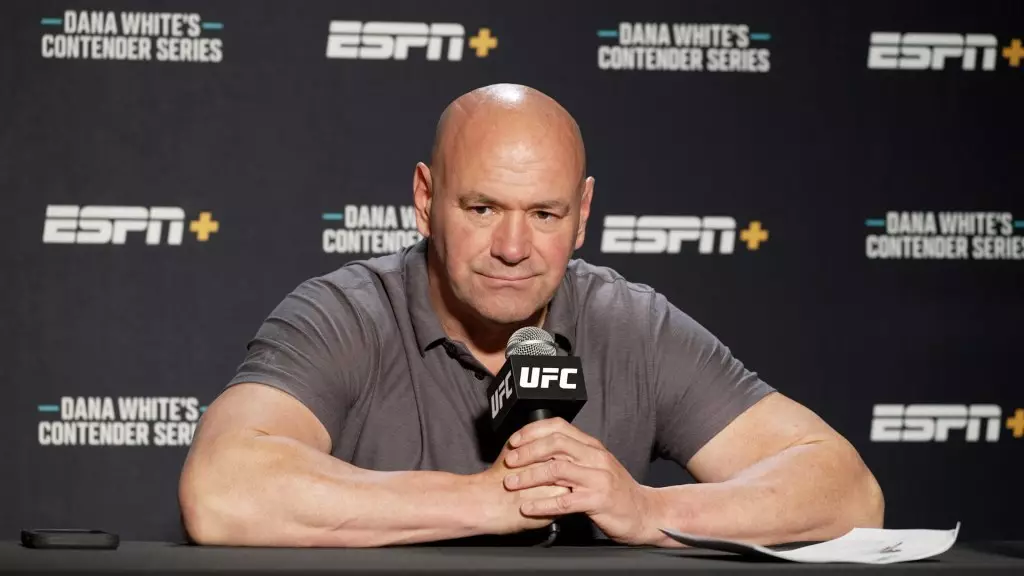In the aftermath of UFC 306, a prominent conversation emerged centered around fighter safety and pre-fight medical evaluations. The event witnessed Sean O’Malley, the reigning bantamweight champion, succumb to a decisive defeat against Merab Dvalishvili. The unanimous decision not only cost O’Malley his title but also raised questions regarding the extent to which fighters can conceal injuries leading up to fights. O’Malley’s subsequent revelation of a torn labrum in his hip, sustained ten weeks prior, served as a stark reminder of the physical and mental toll that injuries can take in the high-stakes arena of mixed martial arts (MMA).
In combat sports, the prospect of fighting while injured is a common yet complex issue. Fighters operate in an environment characterized by immense pressure to perform and deliver thrilling displays for both fans and promoters. This often leads to the phenomenon of athletes opting to fight despite physical ailments. Dana White’s comments to the media illustrate the difficulties in identifying internal injuries such as a torn labrum, indicating that the onus often falls on fighters to disclose their conditions. This creates a precarious situation and raises concerns about regulatory oversight in fighter health, pushing organizations like the UFC to rethink their approach to pre-fight evaluations and medical protocols.
Viewers and analysts alike noted O’Malley’s unusually flat performance during the bout, a point that resonated significantly with Dana White. Observations from multiple sources, including fans and commentators, highlighted that O’Malley appeared not to have the same explosive energy that characterized his previous fights. Such a noticeable deviation raises further questions about the effectiveness of communication between fighters and their respective medical teams. If a fighter does not exhibit typical fighting conditions, it should warrant immediate investigations into their readiness to compete. This incident amplifies the need for more proactive measures to be implemented across the sport to safeguard athletes.
The reality of O’Malley’s injury emphasizes the urgent need for improved safety protocols within promotional organizations. This includes the establishment of rigorous pre-fight medical examinations designed to uncover latent injuries. While combat sports inherently involve risk, ensuring that fighters are competing at their best capabilities is essential for their safety and the integrity of the sport. Enhanced screening methods, possibly incorporating advanced imaging techniques, may serve as a vital tool in detecting injuries that typical examinations might miss.
As O’Malley prepares for surgery, the road ahead illustrates the harsh reality athletes face when they push through pain during competitions. Their bravery often conceals the risks carried by their physical sacrifices. Fans should maintain a nuanced understanding of the challenges fighters encounter both inside and outside the cage, recognizing that their favorite athletes are not just warriors but also individuals grappling with the physical and emotional consequences of their choices. While O’Malley may have lost his title this time, his commitment to recovery offers a glimpse into the resilience that defines champions in the world of mixed martial arts.

